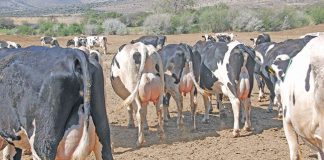
Photo: Wikimedia Commons
Managing horse manure and bedding is a daily task, and as such, when your staff go on holiday or are ill, everything comes to a halt. Being short-staffed during the rainy season is particularly difficult, as wet bedding and manure rot rapidly!
Getting the manure out of the stable is only part of the problem. The entire cycle involves collection, movement to a temporary location, and composting or final disposal. And over a long holiday period, such as Easter or Christmas, even the company that removes the manure may be unavailable.
Manure can heap up quickly. A single horse can produce about 23kg of urine and manure a day. If the animal is stabled, that’s about 12t of manure, urine and dirty bedding material a year!
Removal is not the only problem in summer. Flies proliferate in warm, moist manure. The breeding cycle for flies at this time of year can be as short as one week after the eggs are laid.
This can result in millions of offspring a month if there is enough manure. It has been calculated that under ideal conditions, a single fly and her generations of offspring can give rise to 300 million flies in about 60 days!
Conversely, few flies will develop if manure is removed from the stable site and made unavailable to flies within their seven-day breeding life cycle. This means that every week, all the manure and bedding removed from stables must be composted, covered or dried out.
The problem is not just in the stables: keeping your horses out in paddocks or on grazing fields doesn’t solve the problem. Manure piles up here, too, and undigested nitrogen builds up in the soil, encouraging the growth of toxic nitrogenous plants.
During the warm, humid summer season, these plants can take over the grazing. So the manure in the fields, especially around water troughs and feeding points, should also be removed manually and grazing areas limed, then rotavated or harrowed.
Draw up a schedule
Ideally, the design of a stable should allow for quick, easy removal of manure. There also needs to be a strict schedule for managing the process efficiently.
Many stables now dump manure and soiled bedding daily into a large metal skip that is collected weekly or monthly. The skip should be located close to your stable, ideally downhill, with a plank to allow dumping with a wheelbarrow. A paved surface to the skip is essential for the wheelbarrow.
With larger stables, a small vehicle pulling a cart can be driven through the stables and loaded. This works very well if the skip is also placed alongside a platform on one side of the stables.
Dr Mac is an academic, a practising equine veterinarian, and a stud owner.










